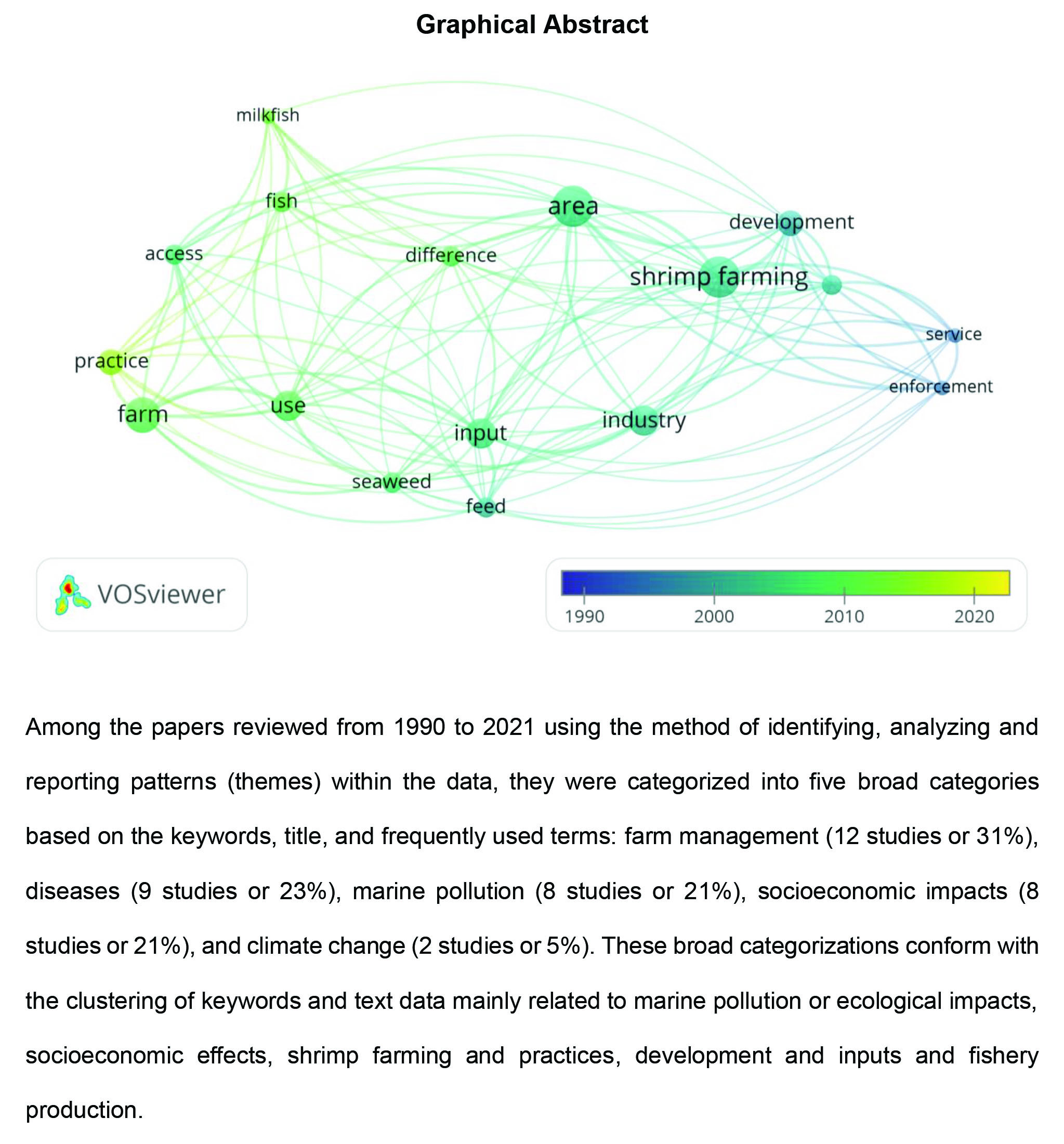Aquaculture production is under pressure to increase its production to meet the growing demand for food from a growing population. In the Philippines, aquaculture has experienced the shift from milkfish to prawn with its attractive marketable price. Its intensification has led to negative and positive impacts making its collapse inevitable in the mid-1990s and raised a range of environmental and socioeconomic problems. This paper reviewed the environmental impacts, challenges, and disease outbreaks that overtook the industry using the Preferred Reporting Items for Systematic Reviews and Meta-Analyses (PRISMA) method. We examined gaps and changes required to revitalize the industry to properly take-off. It considers and gives details on the impacts of shrimp culture on the environment e.g. shrimp farm management, marine pollution, disease outbreaks, climate change impacts, and socioeconomic impacts. Moreover, the presence of viral diseases such as White Spot Syndrome Virus (WSSV), Monodon Baculovirus (MBV), Infectious Hypodermal and Hematopoietic Necrosis Virus (IHHNV), Hepatopancreatic Parvovirus (HPV), and Yellow Head Virus (YHV), have caused socioeconomic impacts with approximate losses of 40,080 mt in 1997 to 51,000 mt in 2014 in the shrimp industry. Recommended strategies were considered to improve the environmental management of shrimp aquaculture, including disease management, and priorities that were highlighted for future research. This management relates to adopting good aquaculture practices on shrimp culture, proper environmental monitoring and sustainable practices at the farm level.

